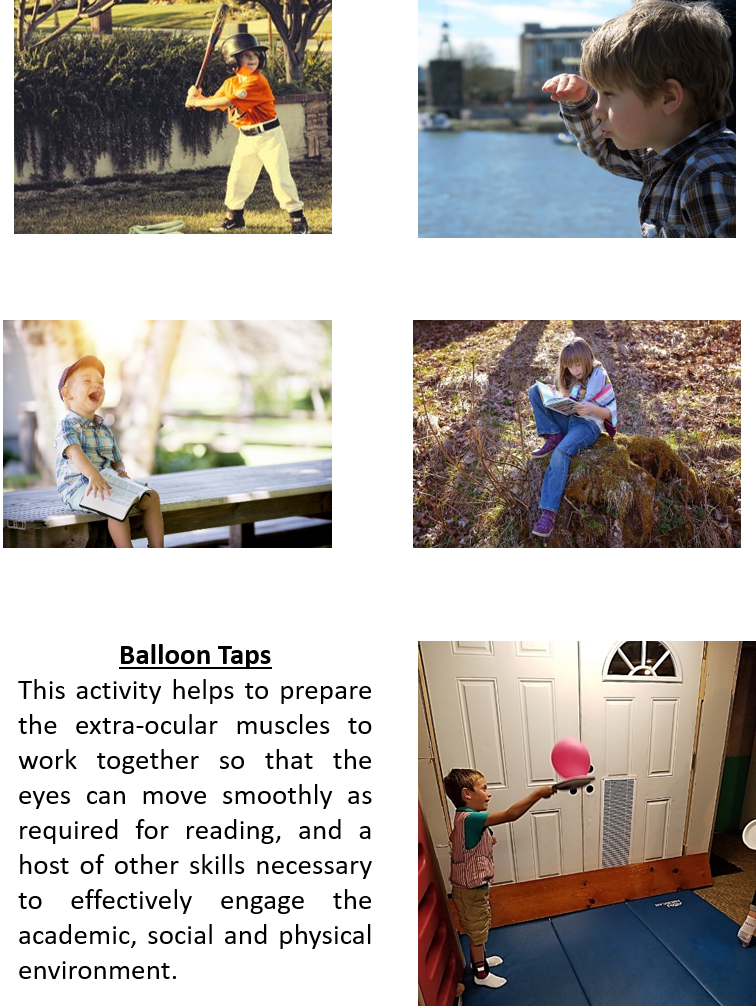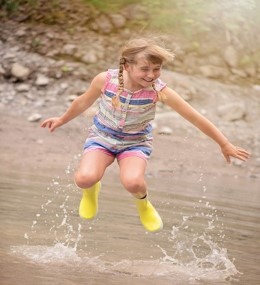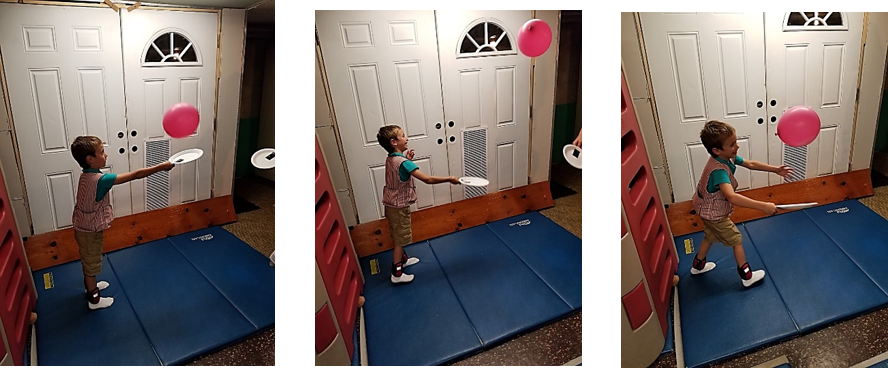
Getting youngsters with Sensory Processing Disorders to sustain visual attention and visual pursuits as needed for greater success in reading and exploring the environment can be problematic.
Without sustained visual attention, the ability to name and understand the functionality of whatever it is you are looking at, is difficult. Without the ability to sustain looking for visual pursuit of the object as it moves, it is virtually impossible to predict where the object is likely to land. The child cannot know where to move to either intercept the object (if it is friendly), or to avoid the object (if it is harmful). In addition, many children with SPD have sensory defensive behaviors and automatically tend to withdraw from unexpected and/or moving targets; thus limiting their ability to learn from objects in the environment.


We used a paper plate for our activity. We stapled a wide craft stick onto the plate and taped over the staples with heavy duty electrical tape from Dollar Tree. Voila!, we had made a racquet for the balloon. (We also got the package of balloons at Dollar Tree).
We initiated exposure to the need for self-directed visual pursuits by using an unpredictable, yet non-offensive target for visual regard. The balloon is soft, doesn’t hurt, and yet responds to air currents and direct contacts derived from movements of the child. This activity can be engaged with an adult who can guide direction of the balloon movements to make sure the child visually pursues the balloon while standing still, while moving through the midline and to various places in the room. The child can also engage this activity with a focus on motor control by counting the number of consecutive taps achieved.
Additional skills incorporated into this activity include:
- Posture, balance and dynamic equilibrium as the child moves about to contact the balloon
- Hand turning skills as the child learns to adjust hand/wrist moves to contact the balloon the racquet
- Motor planning in terms of “where” to be and “when” to be there, thereby adding learning about spatial and timing components inherent in this activity.


3 Responses to “Back to School with Sustained Visual Regard!”